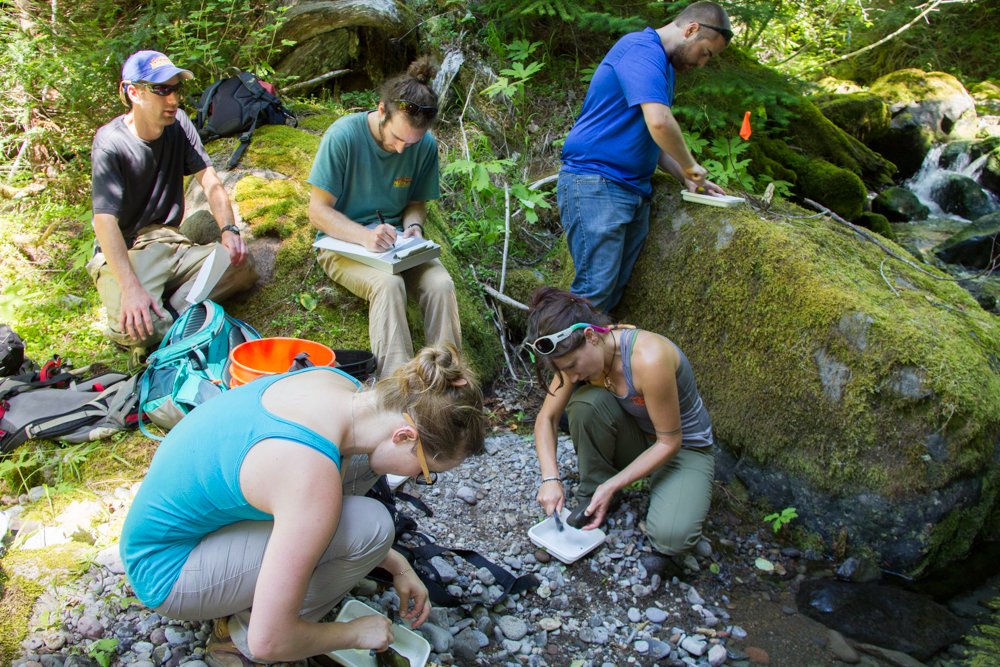Andrews Forest researcher Dana Warren studies how light affects streams. Forest canopies along streams regulate stream light availability, which influences water temperature, in-stream primary productivity, nutrient dynamics, and, thereby, the entire aquatic ecosystem. In one publication, Dana and his team outlined a conceptual framework for understanding change in stream ecosystem processes and communities when disturbance first creates high light. As a young forest develops, stream light decreases; however, later in stand development canopy gaps are created by localized disturbances, such as windthrow, and stream light increases, but in patches. A second publication, reports results of in-stream experiments to explicitly examine how the spatial variability of stream light patches affects primary production and stream nutrient demand. In well-lit sections of the stream periphyton growth was nutrient limited; conversely, light availability was the limiting factor in poorly-lit sites. Ultimately, in the sites with more light patches (i.e., sites with old-growth riparian forests), the stream shifted frequently between light- versus nutrient-limitation.
“Long-term effects of riparian forest harvest on light in Pacific Northwest (USA) streams” http://www.journals.uchicago.edu/doi/abs/10.1086/690624
“Characterizing short-term light dynamics in forested headwater streams” http://www.journals.uchicago.edu/doi/abs/10.1086/691540

